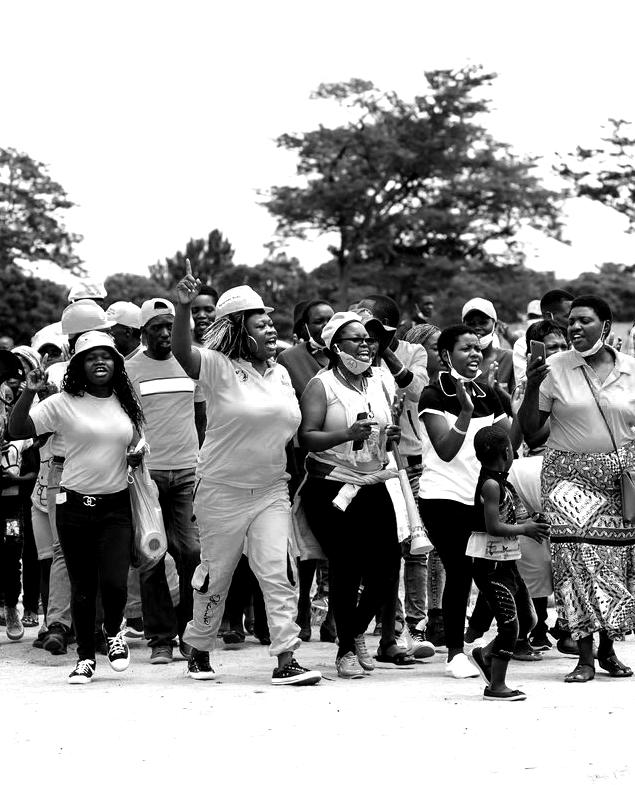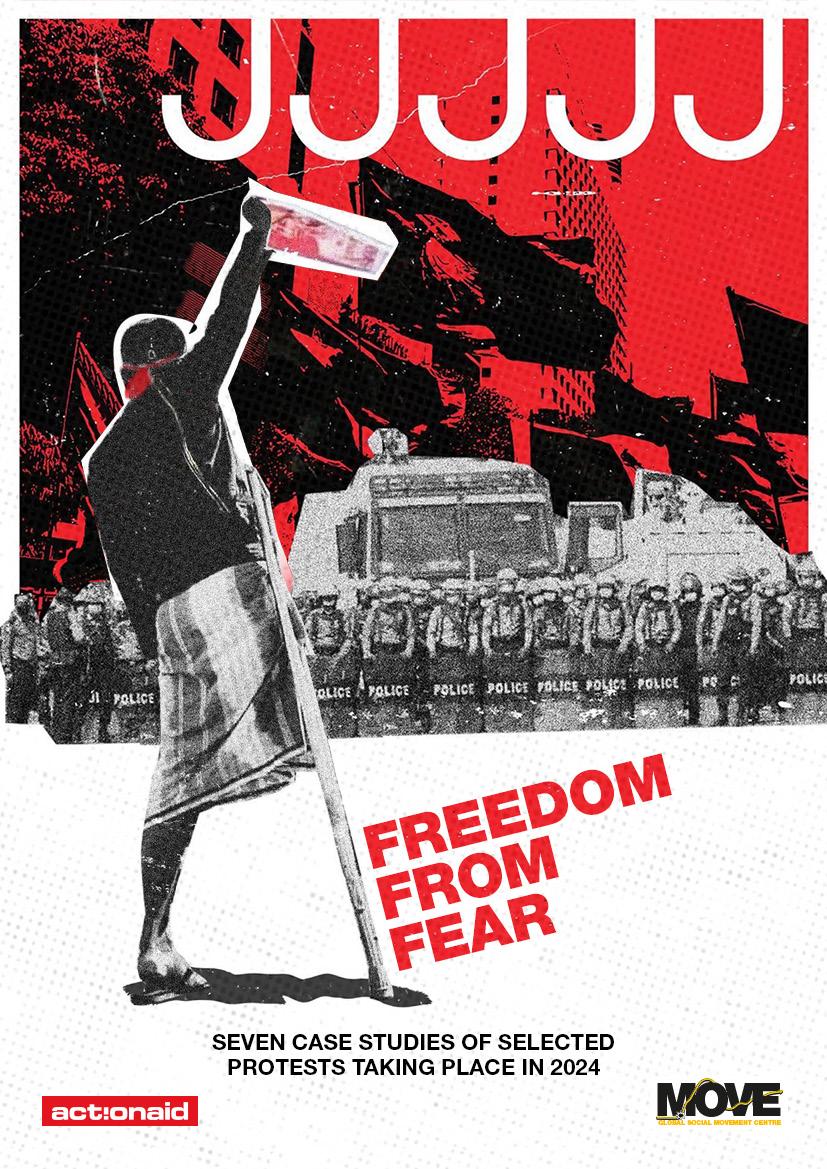

SEVEN MOBILIZATIONS FROM
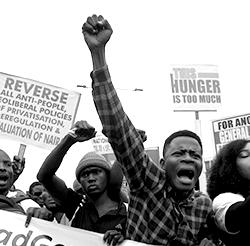
END BAD GOVERNANCE: NIGERIA’S CALL FOR CHANGE
NIGERIA
PAGE: 6-9
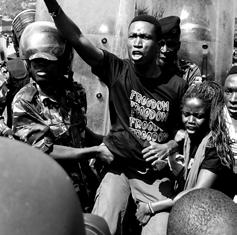
#MARCH TO PARLIAMENT: UGANDA’S YOUTH DEMAND ACCOUNTABILITY
PAGE: 10-13 UGANDA
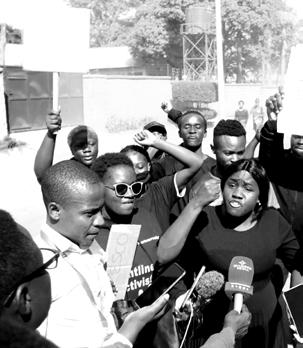
FIX ZESCO: YOUTH RISE AGAINST ZAMBIA’S ENERGY CRISIS & CLIMATE INJUSTICE
ZAMBIA
PAGE: 14-17
CLICK OR TAP TO SELECT A PROTEST
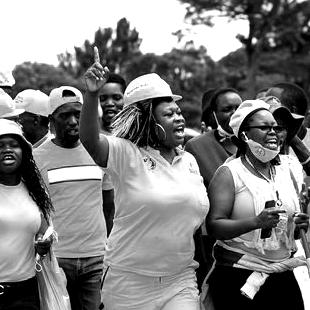
SADC PROTESTS: ZIMBABWE’S YOUTH DEMAND JUSTICE AND REFORM
PAGE: 18-21 ZIMBABWE


ACROSS THE WORLD IN 2024
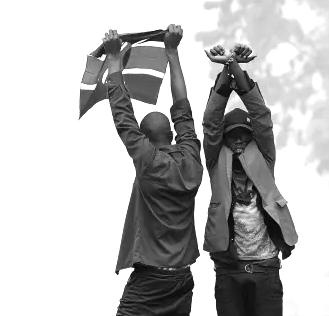
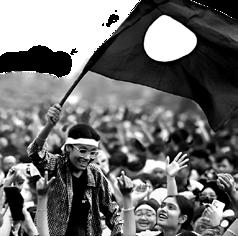
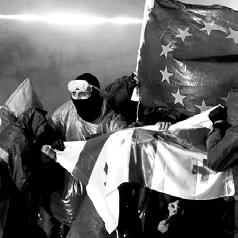
GEORGIA 2024: YOUTH RISE FOR EU AND RIGHTS
The front page cover is based on a poster created by Myanmar artist called Blackdesign


A protester with one leg amputated stads, defiantly facing the assembled military force. Across the top of the image, the text "22222 is visible, representing the protest movement started on 22/2/2021.

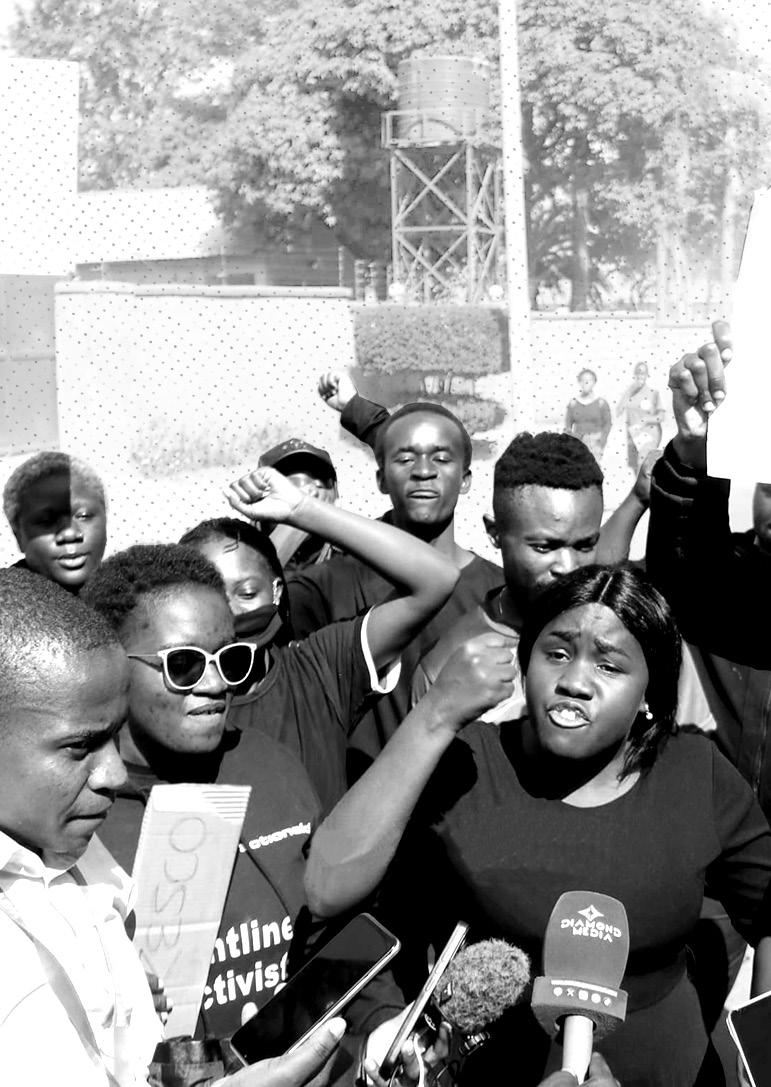
INTRODUCTION
Social movements are the most powerful catalyst for the future we deserve.
We stand at a pivotal moment in history, where the urgency for justice and systemic change has never been greater. Across the globe, movements led by communities and young activists are sparking transformative change, as they always have, challenging power and imagining new possibilities.
This booklet highlights seven select mobilizations from around the world in 2024, reflecting the courage, creativity, and demands of youth-led and community-driven movements.
These stories offer a glimpse into struggles that defined the year—and the ways in which ActionAid stood in solidarity, whether through direct support, collaboration, or simply showing up when invited. We do not claim influence over any of these protests or movements; instead, we honour their leadership and follow their direction, responding to the needs they define.
This snapshot captures a moment in time—the energy and urgency of 2024. We recognize that the realities and outcomes of these movements continue to evolve, in ways both expected and unexpected. What follows is not a complete or final account, but a reflection of the resistance and resilience we witnessed during a remarkable year.
SUPPORTING MOVEMENTS*
For decades, the ActionAid federation has been collaborating with movements directly involved in social change struggles, based on a shared vision of secularism, democracy, feminism, and economic, environmental and social justice. The Global Social Movement Center (MOVE) was set up in 2022 to deepen and expand this work, with several regional hubs, connected to a network of over 100 local youth-led training and activist centers, known as Global Platforms.
Our approach to supporting social movements goes beyond moments of mobilization—we provide multi-layered, sustained, and principled support grounded in solidarity, justice, and care. In the face of protest, repression, and social upheaval, our role is not to lead, but to stand alongside.
The support we offer can be understood across the following five key dimensions:
Strategic & Political Support
We assist movements in shaping powerful campaigns, engaging in policy and legislative processes, and strengthening their public narratives. This includes support for advocacy, human rights defense, legal aid for activists, risk analysis, and building influence with key stakeholders.
Operational & Logistical Support
Movements need reliable infrastructure to mobilize effectively. We help to provide safe spaces for organizing, coordination tools, communications support, digital security, legal bail support, and access to emergency or rapid response funding when needed.
Wellbeing & Protection
Centering the safety and wellbeing of activists is critical. Our support includes psychosocial care, mental health resources, medical aid for protesters, dignity kits, feminist leadership support, and assistance with relocation or safe housing in times of crisis.
Capacity Strengthening & Sustainability
To ensure movements remain resilient and impactful over time, we invest in training, leadership development, storytelling, strategy development, and the sustainability of activist livelihoods. This includes both formal and non-formal learning opportunities for individuals and collectives.
Solidarity & Regional Collaboration
We foster connections across borders to amplify shared struggles. This includes support for coalition-building, intergenerational and regional solidarity, international networking, and joint mobilizations that strengthen movements through collective action and shared learning.
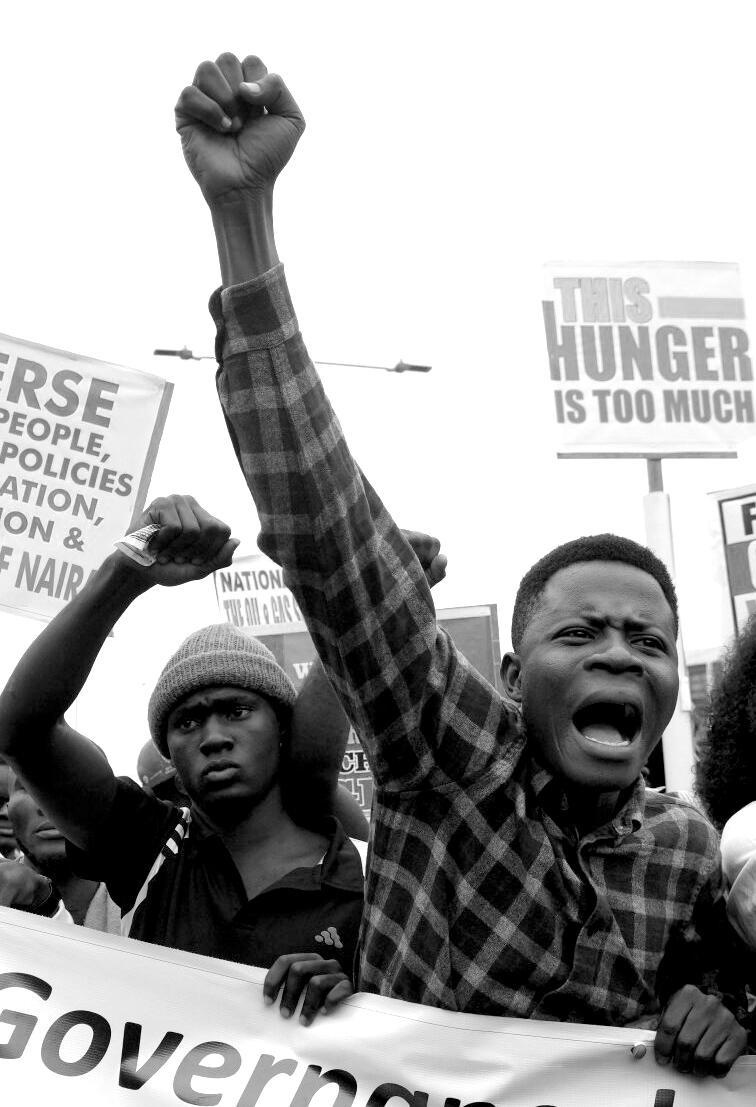
Photo:
IN AUGUST 2024, NIGERIAN
YOUTH MOBILIZED NATIONWIDE PROTESTS, DEMANDING TRANSPARENCY, ACCOUNTABILITY, AND AN END TO SYSTEMIC FAILURES.
CONTEXT
Nigeria, Africa’s most populous nation, has long faced systemic corruption, unemployment, and deteriorating public services. In 2024, public frustration boiled over as inflation surged fuelled by neo-liberal economic policies, fuel subsidies were removed, and insecurity deepened.
Disillusioned by decades of unfulfilled promises and government inefficiency, Nigerian youth spearheaded the renewed End Bad Governance movement. Originating during the #EndSARS protests in 2020, the movement demanding accountability and reform gained renewed vigor in 2024, with citizens—led primarily by young people—leveraging social media platforms to demand better governance, reduced corruption, improved infrastructure, and employment opportunities.
THE NATURE AND GOALS OF THE PROTESTS
The nationwide protests aimed to achieve systemic change through empowering citizens using mobilization, and civic action to demand transparency and integrity from public officials. The campaign sought to address corruption, inefficiency, and inequality, fostering a culture of justice and sustainable development:
■ Transparency in government spending and the eradication of corruption.
■ Restoration of fuel subsidies to ease the cost-of-living crisis.
■ Improved security measures to combat kidnappings and banditry.
■ Youth employment programs to address widespread unemployment.
■ Accountability from political leaders, with demands for the resignation of corrupt or incompetent officials.
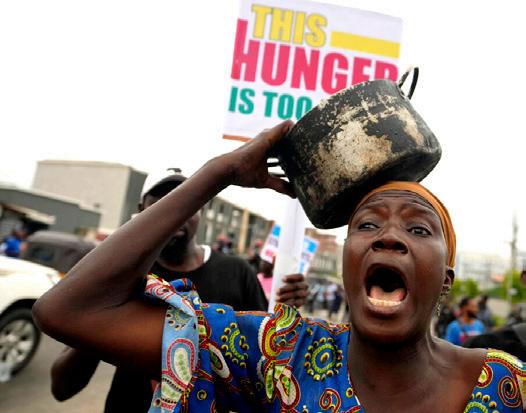
CRACKDOWN
The Nigerian government has responded to the End Bad Governance movement with increasing crackdowns, employing heavy-handed tactics such as unlawful arrests, suppression of protests, and internet restrictions through the Cybercrimes ( Prohibition, Prevention etc) Act.
■ Police Brutality: Security forces used tear gas, water cannons, and live ammunition to disperse crowds, leading to over 30 reported deaths and hundreds of injuries.
■ Arrests and Intimidation: Dozens of activists were detained, many charged with treason, some without charge, and organizers faced harassment both online and offline.
■ Misinformation Campaigns: State-sponsored media and bots spread propaganda to discredit the movement and sow division among protesters.
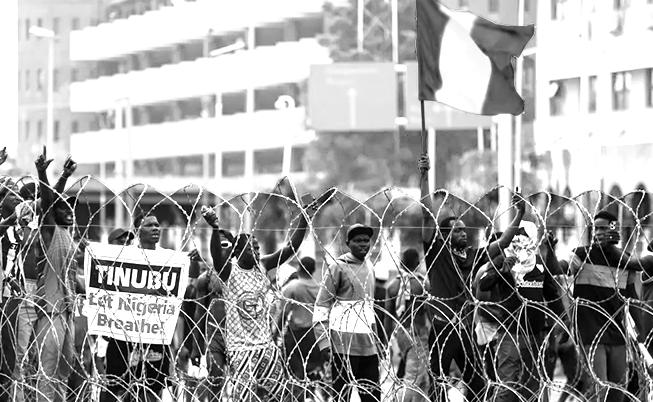
Photo: Kola Sulaimon
Photo: Francis Kokoroko Reuters
OUTCOMES
While the protests forced a national reckoning, their outcomes were mixed: Massive turnouts were recorded in Lagos, Abuja, Kano, Delta, and Port Harcourt with protesters chanting slogans ”Enough is Enough” and ”Fix Nigeria Now,”. Digital platforms X (formerly Twitter) and WhatsApp played a pivotal role in organizing and spreading awareness.
■ Policy Shift: The government pledged to review fuel subsidy policies and initiated investigations into corruption allegations against key officials.
■ Youth Representation: Movement leaders secured a dialogue platform with government representatives, though many activists found these engagements inadequate.
■ Community Solidarity: Despite challenges, youth volunteers organized medical aid stations, legal support for detainees, and crowdfunding campaigns for affected families.
■ Global Solidarity: The protests drew international attention, with Nigerian diaspora communities and global organizations offering support.
Despite these developments, systemic change remains elusive, leaving citizens skeptical of government’s commitment to reform.
The 2024 protests showcased the determination of Nigerian youth to demand a better future. Though systemic reform is still a distant goal, the movement achieved some short-term victories and the End Bad Governance movement has reinvigorated civic activism and inspired hope for meaningful change.
ACTIONAID SUPPORT*
Strategic & Political Support
Campaign Strategy Support Legislative Engagement
Legal Defense for Activists
Resisting Crackdowns
Human Rights Advocacy
Operational & Logistical Support
Safe Spaces for Organizing Logistics and Comms Support
Social Movement Mobilization
Wellbeing & Protection
Medical Aid for Protesters Mental Health and Wellbeing On the Ground Solidarity
Feminist Leadership Support
Safehouse and relocation
Capacity Strengthening & Sustainability
Movement Building
Youth Leadership Support Sustaining Activist Livelihoods
Debriefing and Analysis
Solidarity & Regional Collaboration
Regional Solidarity (eg. RPPF) International Networks
Social Movement Mobilization
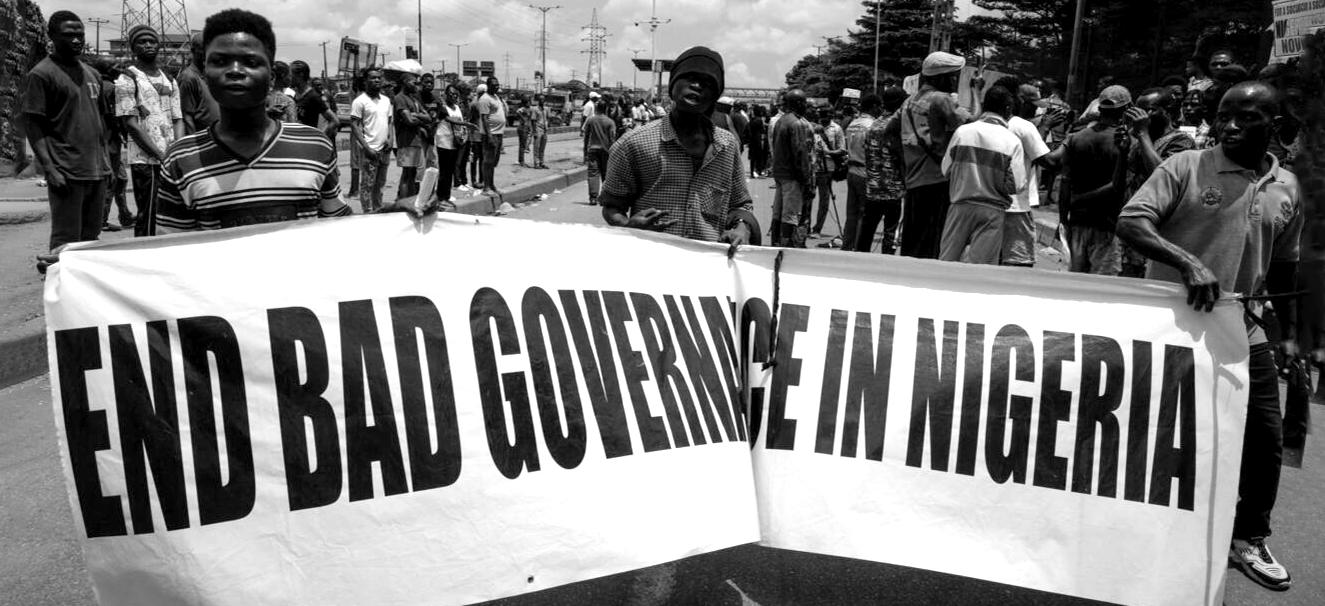
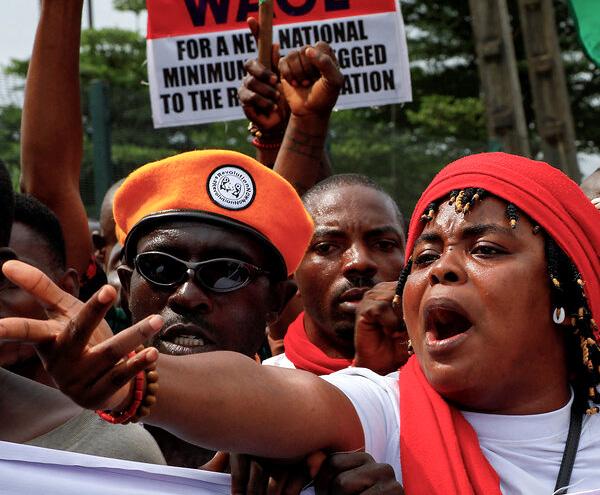
”We will continue the fight for justice and equality until every Nigerian is treated with dignity, as no Nigerian is more Nigerian than the other.”
— Josephine Adokwu, activist

Photo: Francis Kokoroko Reuters

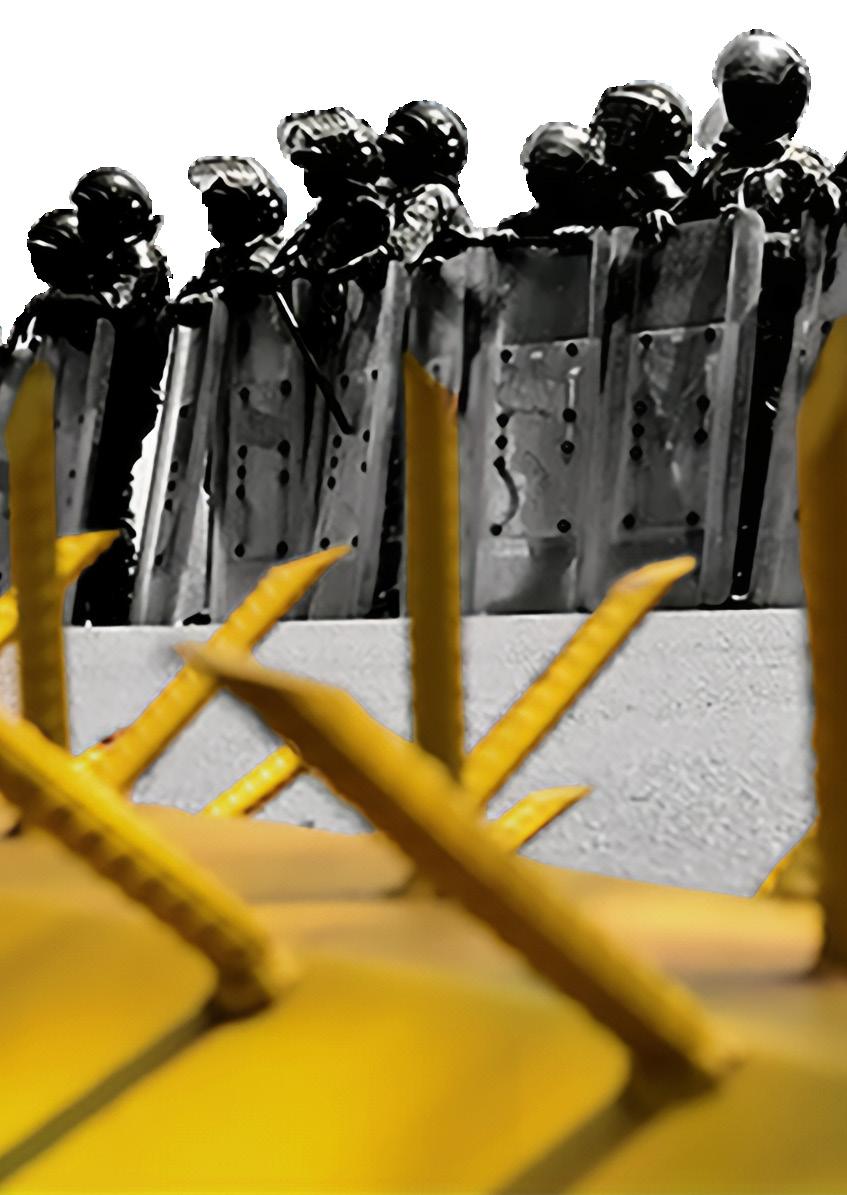
YOUNG UGANDANS LEAD A BOLD ANTI-
CORRUPTION PROTEST, FACING CRACKDOWNS TO DEMAND TRANSPARENCY AND JUSTICE
FROM THEIR LEADERS.
CONTEXT
On July 23, 2024, young Ugandans led a bold anti-corruption protest, the #MarchToParliament, demanding transparency and justice from the country’s leaders. The protest was organized by anti-corruption activists, inspired by similar movements in neighboring Kenya, despite being initially banned by authorities due to cited risk of criminal activity.
The protest reflected people’s widespread frustration with systemic corruption and governance failures, including high profile cases of embezzlement and public funds misuse, under the president Museveni who has been in power since 1986. Young people, particularly from Generation Z, spearheaded the movement, many of which were trained and supported through ActionAid’s Global Platform.
THE NATURE AND GOALS OF THE PROTEST
The #MarchToParliament united numerous smaller movements from across Uganda that had been working on local issues for years, coming together in a moment of joint solidarity to protest the mismanagement of the country by the Ugandan government. The march aimed to:
■ Demand Accountability: Urge the resignation of Speaker Anita Among amid corruption allegations.
■ Promote Transparency: Advocate for lifestyle audits of legislators to uncover illicit wealth.
■ Reduce Government Expenditure: Call for a reduction in parliamentary size to cut costs.
■ Empower Youth Participation: Mobilize young citizens to actively engage in governance reforms.
CRACKDOWN
The government’s heavy-handed approach and use of excessive force to limit the scale of protests has been criticized by human rights activists who argue that it stifles freedom of expression and the right to peaceful assembly. The brutality of the crackdown,
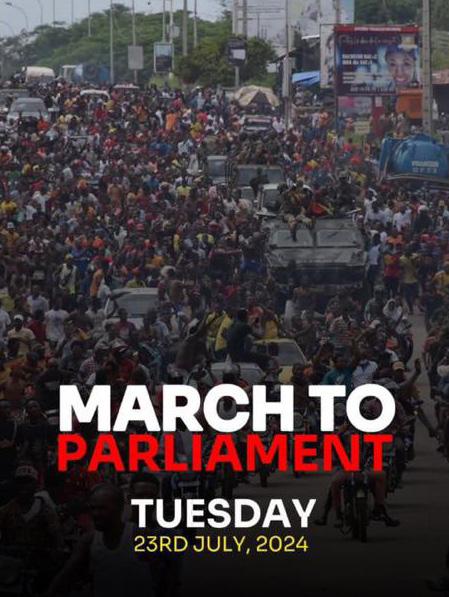
including the shooting of opposition leader Bobi Wine and the continued detention of many protesters, has created a climate of fear that discourages further participation. Tragically, a young protester supported by ActionAid succumbed to trauma, while others, including members of partner organizations like Vijana Corps, face ongoing intimidation and harassment.
■ Arrests: Security forces detained over 160 protesters, including key organizers, charging many with offenses like ”common nuisance”, a charge often used to suppress dissent.
■ Intimidation: Heavy deployment of police and military personnel created a tense atmosphere, deterring participation.
■ Suppression of Assembly: Authorities declared the demonstrations illegal, preventing peaceful gatherings.
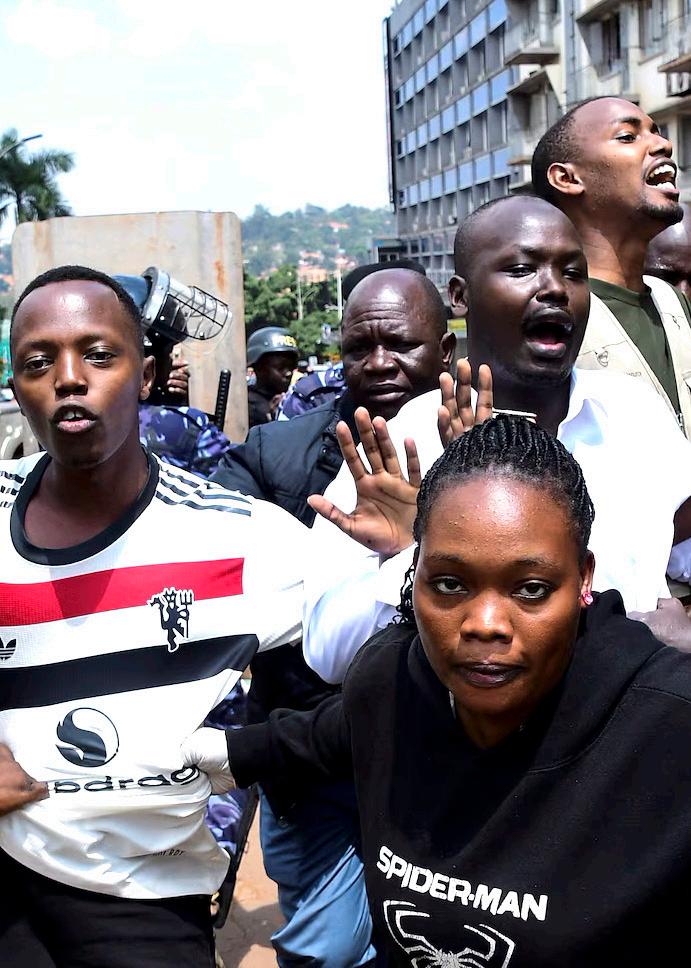
Photo:
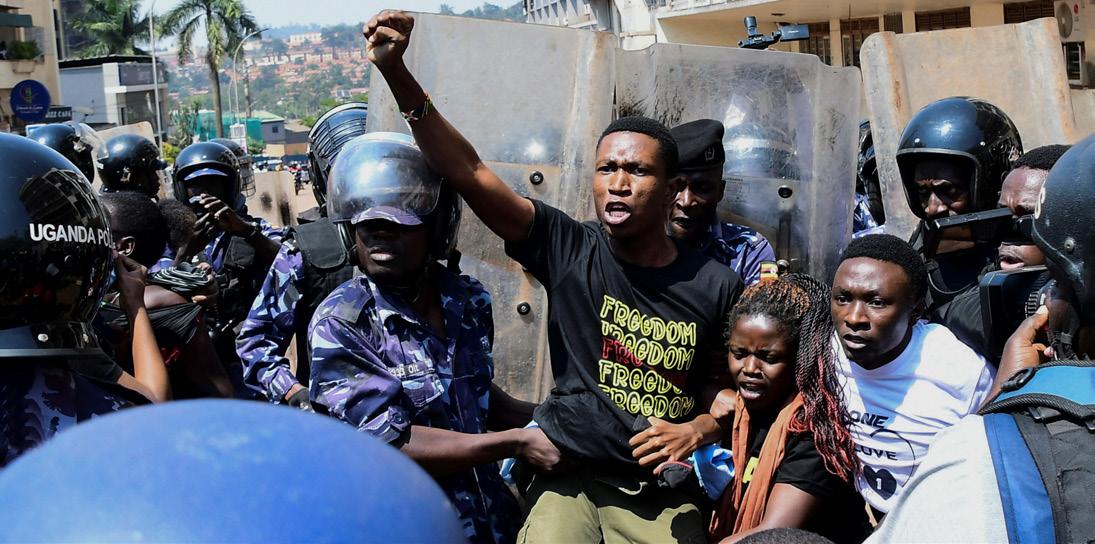
OUTCOMES
The youth’s involvement was transformative for several reasons, especially in bringing a diverse movement from across the country together:
■ Mobilization Power: Social media platforms were effectively used to organize and spread awareness, ensuring large turnouts.
■ Symbol of Change: Their participation marked a generational shift, with youth actively challenging systemic corruption.
■ Risk and Sacrifice: Despite arrests and harsh crackdowns, young protesters showcased their resilience and commitment to reform.
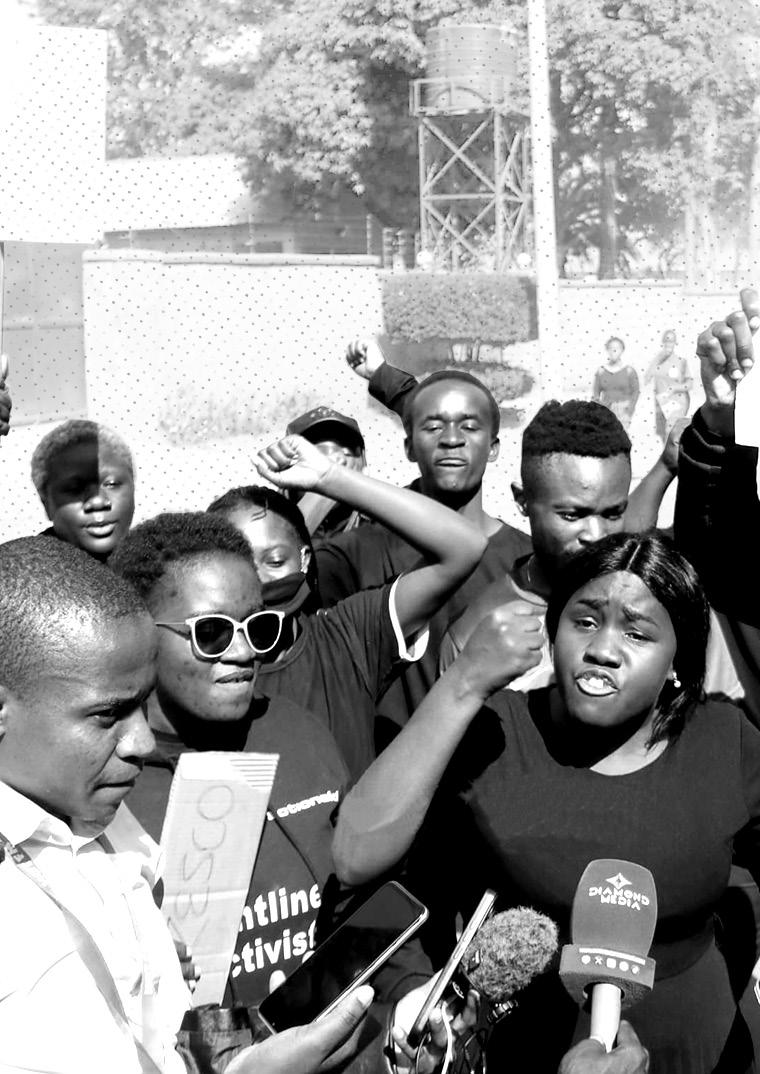
Photo:
AMIDST DROUGHT, ENERGY SHORTAGES,
AND RISING DISCONTENT, YOUNG ACTIVISTS IN ZAMBIA PEACEFULLY DEMAND CLIMATE
ACTION AND ACCOUNTABILITY, SPARKING GOVERNMENT DIALOGUE.
CONTEXT
Zambia, like much of the region, is grappling with the effects of the El Niño phenomenon, which has caused severe shifts in rainfall patterns, drought, and reduced water levels. These environmental changes have led to energy shortages, food insecurity, and heightened poverty, disproportionately affecting women and youth. Compounding these issues are austerity measures, limited social spending, and increasing repression of civic space, which have fueled widespread frustration and discontent.
THE NATURE AND GOALS OF THE PROTEST
In response, young activists organized peaceful protests, including pickets at key government offices such as the ZESCO (Zambia’s state-owned power company) head office and the Ministry of Green Economies.
Their demands were clear:
■ Adherence to ZESCO’s power rationing schedule to ensure equitable access to electricity.
■ Immediate and long-term solutions to the energy crisis.
■ Urgent enactment of a comprehensive Climate Change Bill.
CRACKDOWN
Four organizers were arrested and detained for over 10 hours, and one protester was forced to remove her hijab during detention. Additionally the activists were at a later stage illegally detained by ZESCO staff and the activists are now running a case against ZESCO for abduction.
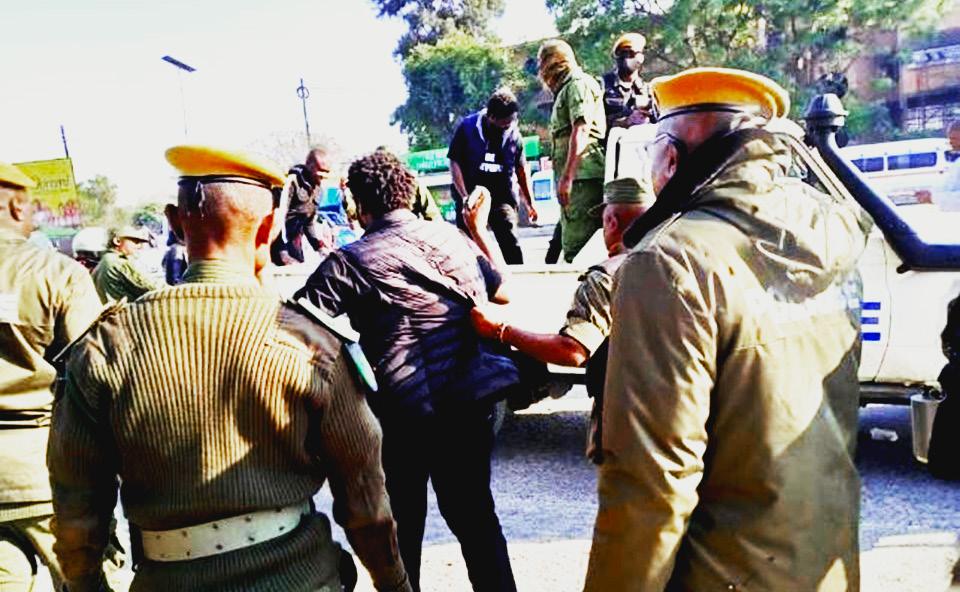
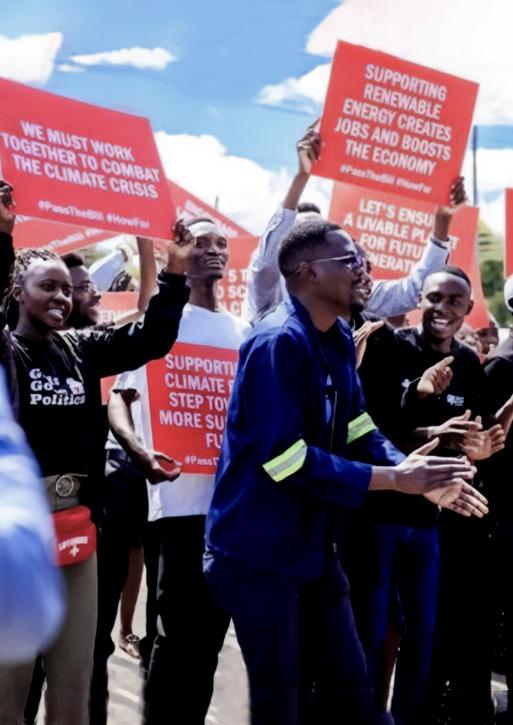
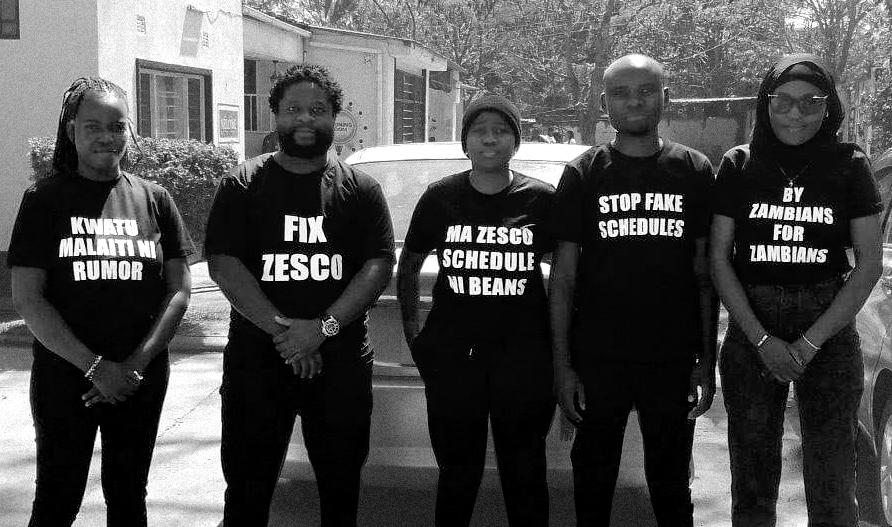
THE OUTCOMES
Despite this, the Fix ZESCO movement achieved a critical breakthrough when the government reassigned the minister of green economics to a different position because of the pressure of the activists and the new Ministers first action was to call for a town hall meeting with the spokespersons from Fix ZESCO to address citizen concerns about load-shedding. Additionally, the Minister pledged to reintroduce the Climate Change Bill in Parliament.
ACTIONAID SUPPORT*
Strategic & Political Support
Campaign Strategy Support Legislative Engagement
Stakeholder Engagement
Climate Justice Advocacy
Narrative Amplification
Human Rights Advocacy
Operational & Logistical Support
Strategic Mobilization
Wellbeing & Protection
Solidarity Statements
Rapid Response Funding
Safe Spaces for Organizing Logistics and Comms Support
Activist Protection Safehouse and Relocation
Capacity Strengthening & Sustainability
Movement Building Youth Leadership Support
NonViolent Action Training
Climate Justice Campaign Training
Leadership Development
Global Solidarity Mobilization Monitoring
Strategic Advocacy Training
Solidarity & Regional Collaboration
Photo: Thompson Kamuhuza Luzendi

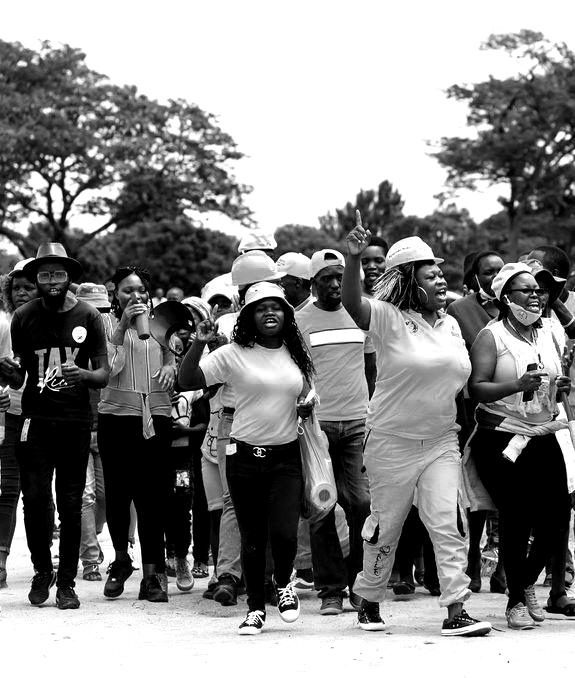
Photo:
AMID POLITICAL
REPRESSION AND ECONOMIC TURMOIL, ZIMBABWEAN YOUTH
LEAD BOLD
PROTESTS FOR DEMOCRACY, TRANSPARENCY, AND HUMAN RIGHTS ON THE GLOBAL STAGE.
CONTEXT
Zimbabwe’s youth have played a pivotal role in the country’s recent wave of protests, fueled by deep frustrations with political repression, economic instability, and systemic corruption. The socio-political backdrop of 2024 includes rampant unemployment, soaring inflation, and authoritarian practices that have marginalized the younger generation.
THE NATURE AND GOALS OF THE PROTEST
The protests, gaining momentum in the first half of 2024, were driven by demands for political reform, greater transparency, and an end to human rights abuses. Youth-led movements, including student groups and grassroots organizations, utilized social media and digital platforms to organize rallies and amplify their calls for change.
Their goals included:
■ The resignation of corrupt political leaders.
■ An end to arbitrary detentions.
■ The release of political prisoners.
CRACKDOWN
In August 2024, during Zimbabwe’s hosting of the Southern African Development Community (SADC) summit and President Emmerson Mnangagwa’s assumption of SADC leadership, the protests escalated. The government responded with an intensified crackdown on opposition groups and civil society, leading to arrests, police brutality, torture and repression of activists and young leaders who were central to the demonstrations.
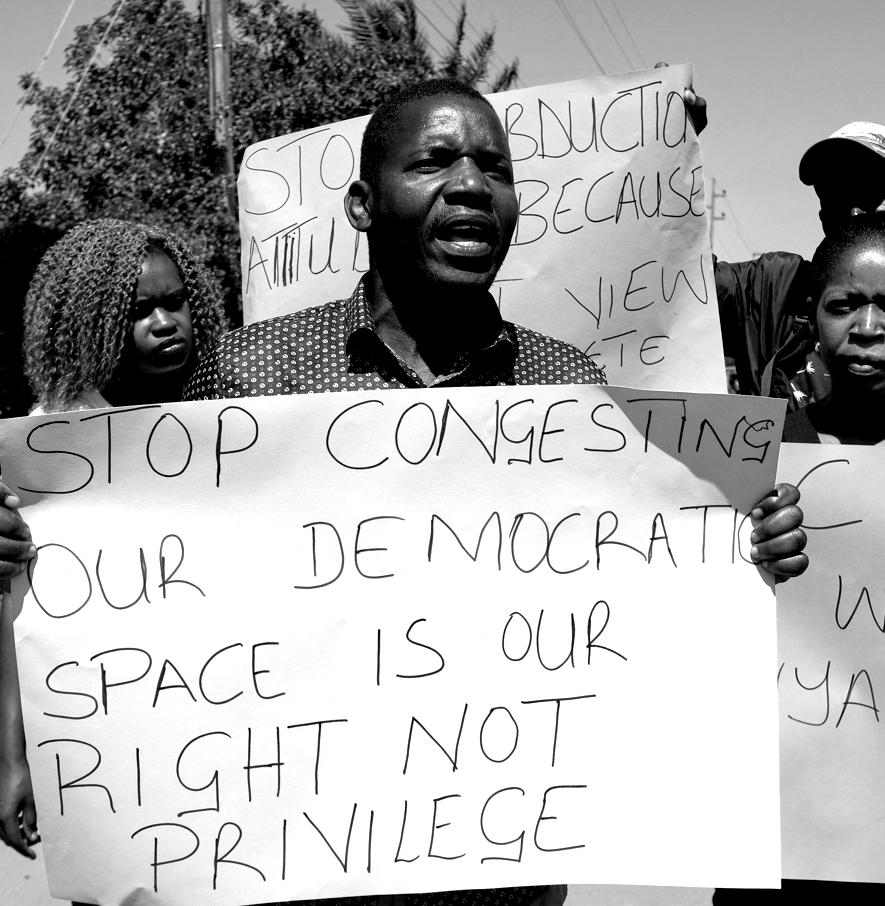
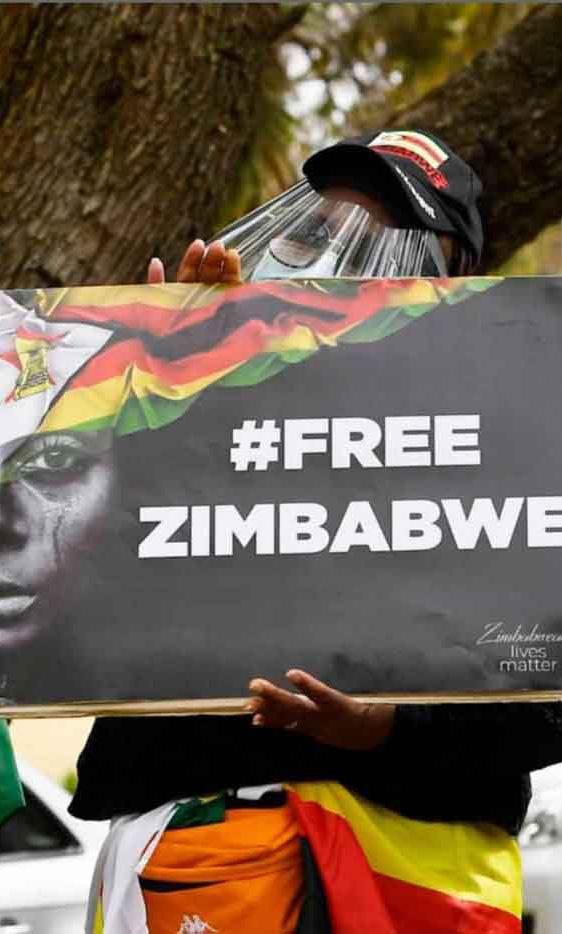
OUTCOMES
The brutality of the government response meant that the outcomes of the protest were not satisfactory. The government’s actions have drawn widespread condemnation from international human rights organisations and various governments calling for immediate release of detainees and for an end of government repression.
Perhaps most importantly, the scale and intensity of repression on various groups united the Zimbabwean rather disjointed opposition across the country with youth showing resilience in their courageous demands for systemic change.
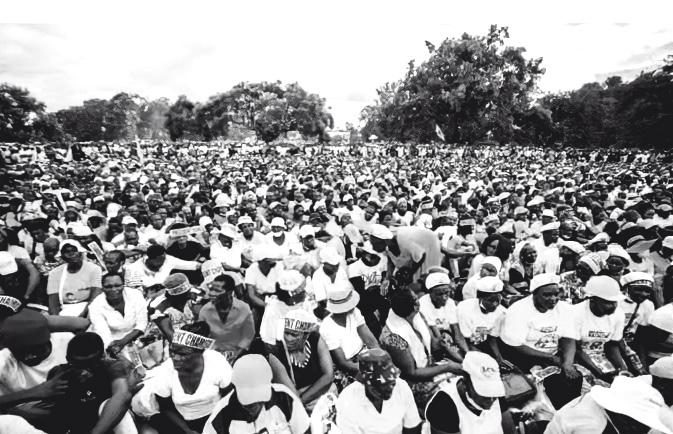
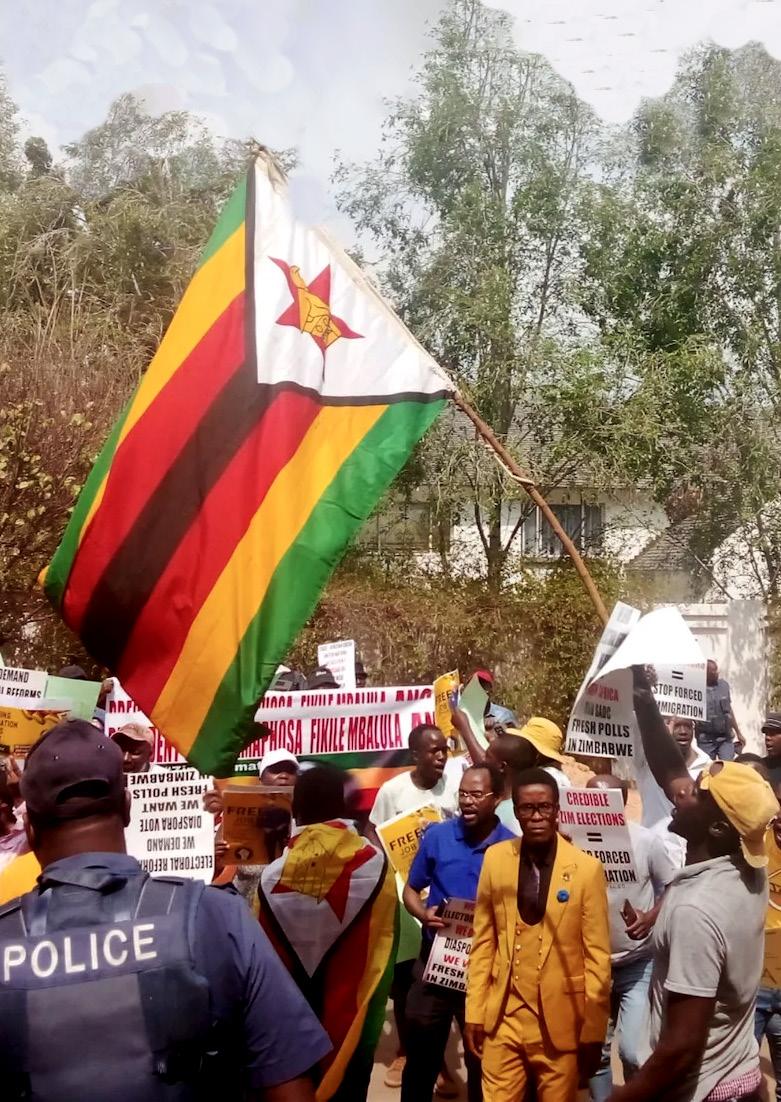
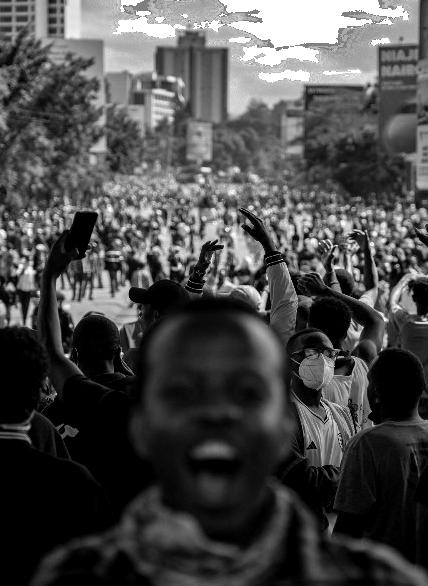
#REJECT FINANCE BILL 2024
Photo: Amaury Falt-Brown/AFP
KENYA
YOUNG ACTIVISTS MOBILIZE MASS PROTESTS
REJECTING A CONTROVERSIAL FINANCE BILL AND SPARKING A NATIONWIDE MOVEMENT FOR ECONOMIC JUSTICE AND ACCOUNTABILITY.
CONTEXT
Kenya’s youth, part of the burgeoning ”digital demographic,” with access to education and digital tools, are increasingly vocal about governance and demanding accountability and action on pressing socio-economic issues.
In recent years, Kenya’s mounting debts to entities like the World Bank, IMF, and Exim Bank of China have exacerbated economic pressures and driven up the cost of living, with taxes imposed on basic commodities, while Auditor General reports have repeatedly highlighted missing public funds at county and national levels.
When Parliament began debating the controversial Finance Bill 2024/25 threatening to increase taxes on essential goods, widespread public outcry ensued, prompting citizens to contact their MPs and demand its rejection. Despite this, most MPs approved of the bill which intensified public frustration. On June 25th, youth-led protests erupted nationwide, with demonstrators blocking streets and occupying Parliament buildings in Nairobi. Mobilization was primarily online, with hashtags like #RejectFinanceBill and
#OccupyParliament dominating platforms like X (formerly Twitter). This movement marked the rise of the ”Gen Z Movement,” led by Kenya’s youngest generation of activists.
THE NATURE AND GOALS OF THE PROTESTS
The protests were not spontaneous but built on weeks of grassroots mobilization . On June 25th, the largest demonstrations to date took place, with youth occupying Parliament buildings. Beyond rejecting the Finance Bill, protesters demanded systemic reform, including:
■ Change of government for failing to protect citizens and stabilize the economy.
■ Reductions in borrowing and improved fiscal responsibility.
The protests showcased the youth’s resilience, creativity, and solidarity. Activists designed posters, printed t-shirts, and organized medical evacuations for injured protesters. Many walked long distances to join the protests, undeterred by police roadblocks. Volunteer medics set up emergency points to provide first aid.
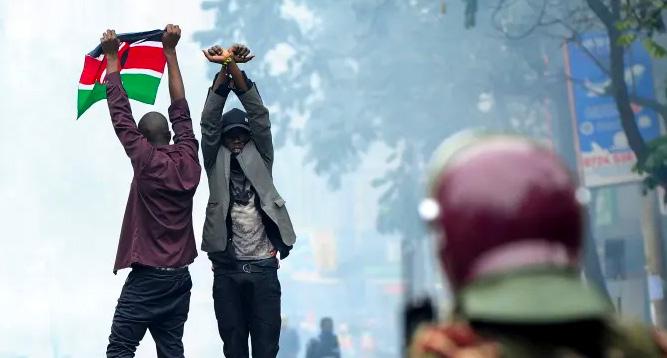
CRACKDOWN
Tragically, the protests were marked by brutal violence.
■ Over 50 youth were killed by police during and after the protests, scores were injured, and many faced abductions and torture including youth suspected of organising protests
■ Armed goons and misinformation campaigns were deployed to destabilize the movement.
■ Several activists remain missing, and bodies of some protesters have been discovered in Nairobi and surrounding regions.
The army, called in to quell unrest, refused to use force and was often seen interacting positively with demonstrators, reflecting the widespread public support for the movement.
OUTCOMES OF THE PROTESTS
■ Formal rejection of the Finance Bill by the President which protected vulnerable groups, including women and farmers, from harmful taxes on imported sanitary products and agricultural inputs.
■ Cabinet Reshuffle: Several Cabinet Secretaries were dismissed.
■ The rejection led to a proposed meeting between the government, political parties, CSOs, youth, and religious representatives. However, youth activists, identifying as ”partyless, tribeless, and fearless,” boycotted this effort, citing distrust in political and religious institutions that had failed to support the protests.
Despite these wins, challenges remain as the political elites leveraged the protests to form a ”Broad-Based Government,” incorporating opposition figures and further entrenching existing power structures. The cost of living remains high, and political divisions have deepened along ethnic and party lines.
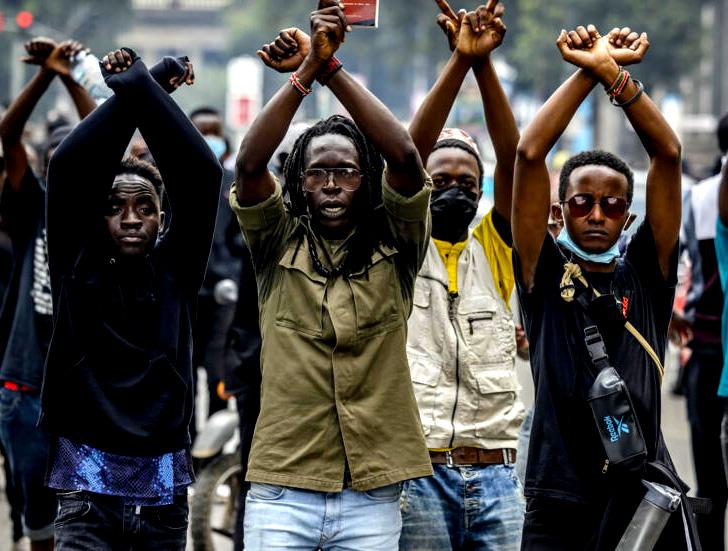
Photo: Luis Tato/AFP
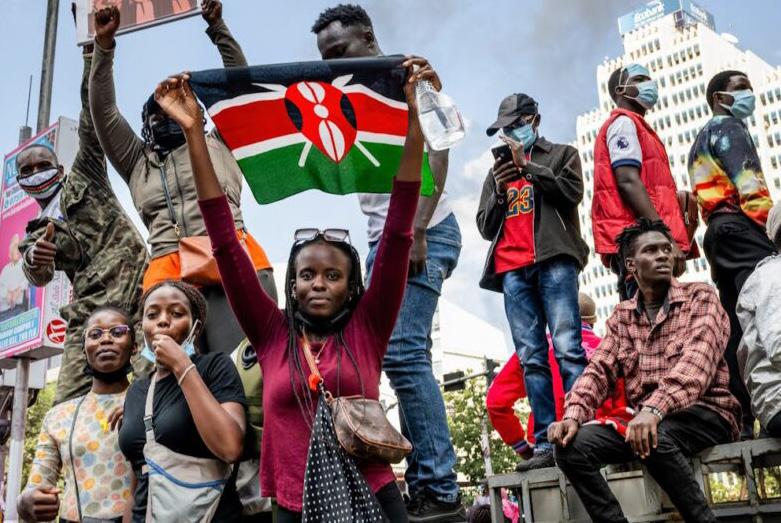
ACTIONAID SUPPORT*
Strategic & Political Support
Policy/Legislative Engagement Narrative Strategy
Campaign Strategy Support
Legal Defense for Activists
Human Rights Advocacy
Youth Leadership Support
Operational & Logistical Support
Strategic Mobilization
Wellbeing & Protection
Psychosocial Support
Capacity Strengthening & Sustainability
Movement Building Youth Leadership Development
Strategic Advocacy Training
Solidarity & Regional Collaboration
Collective Action Support
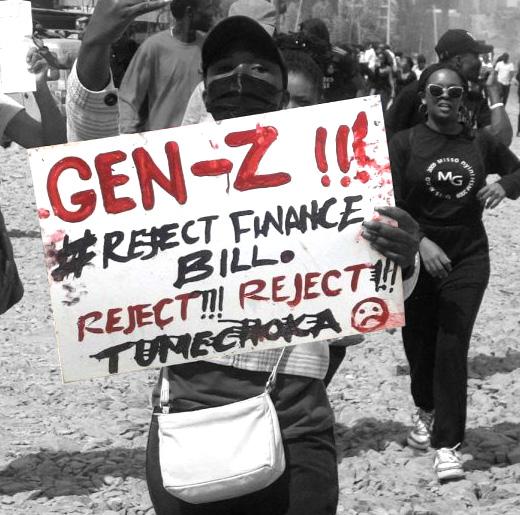

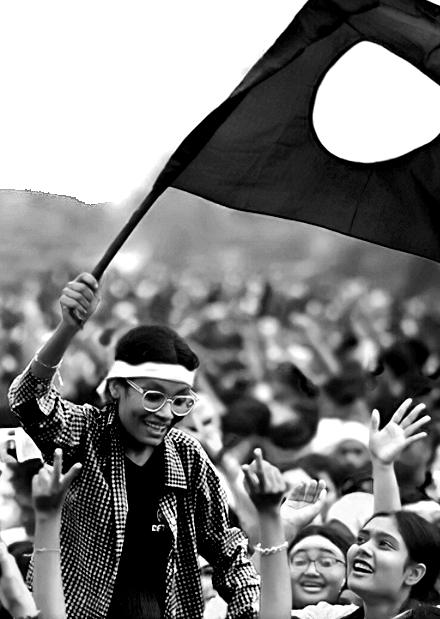
Photo: Niamul Rifat
Anadolu/Getty Images
IN JULY 2024, PROTESTS SWEPT BANGLADESH AS CITIZENS DEMANDED JUSTICE, ACCOUNTABILITY, AND A NEW CHAPTER IN GOVERNANCE.
CONTEXT
Youth movements have driven a new wave of activism in Bangladesh, calling for systemic reforms to address long-standing injustices. Initially sparked by protests against discriminatory quotas in government jobs—seen as unfairly benefiting certain groups—university students and young professionals galvanized widespread support. Their frustration with limited opportunities and a lack of accountability ignited mid-2024 demonstrations demanding an overhaul of the quota system, which activists identified as symptomatic of deeper governance and political issues.
As the protests escalated, grievances expanded to include corruption, political opacity, and economic inequalities. The Anti-Discrimination Movement, a key driver of these events, gained momentum despite facing violent crackdowns and arrests. Tragically, nearly 100 protesters lost their lives during clashes with authorities, but the movement’s leaders remained resolute, vowing to continue their fight for justice and equality.
”We will take the country forward
together.”
— Asif Mahmoud, Coordinator of the Anti-Discrimination Movement, later appointed Adviser to the Ministry of Youth and Sports in the interim government.
Digital platforms, such as Protirodh.net, played a pivotal role in mobilizing volunteers, disseminating information, and organizing demonstrations. These tools reflected the resourcefulness of Bangladesh’s tech-savvy youth, helping to sustain the momentum despite increasing government repression.
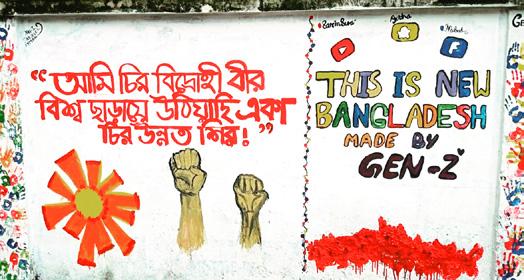
PROTEST OUTCOMES
On August 3rd, the Anti-Discrimination Movement escalated its efforts with a single-point demand: the resignation of Prime Minister Sheikh Hasina. This was soon followed by the launch of the Non-Cooperation Movement, which outlined 15 key reforms to address systemic issues. Demonstrating their ability to transition from spontaneous protests to a structured political movement, the protesters achieved a major victory on August 5th when Prime Minister Hasina fled the country.
This political upheaval marked the beginning of a new era:
■ Interim Leadership: Nobel Peace Prize laureate Muhammad Yunus was appointed as the head of an interim government.
■ Elections Scheduled: Elections were announced to take place within 90 days, offering an opportunity for young leaders to shape a new political landscape.
■ Institutional Reform: The movement’s demands for anti-discrimination policies, accountability mechanisms, and transparent governance began to influence political discourse, signaling hope for long-term change.
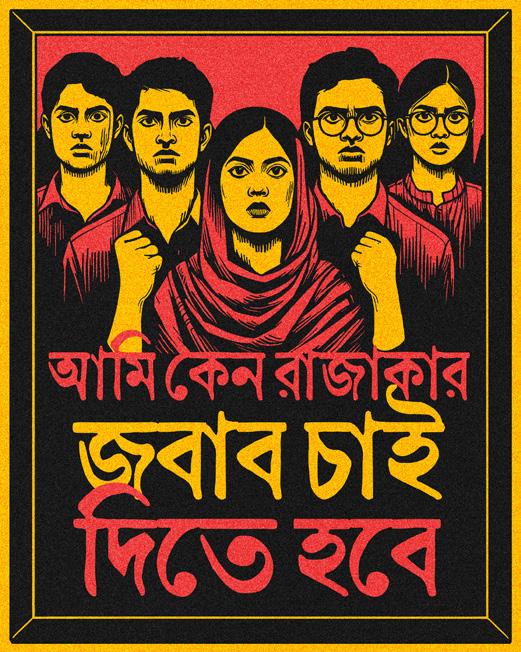
”That is a message for everyone, every person who is fighting against oppression, he/she must believe that the power of oppression can be overcome, if you can overcome the fear. So fight the fear and the oppression you are fighting against is going to give up one day or the other.”
— Asif Mahmoud, Coordinator of the Anti-Discrimination Movement, later appointed Adviser to the Ministry of Youth and Sports in the interim government.
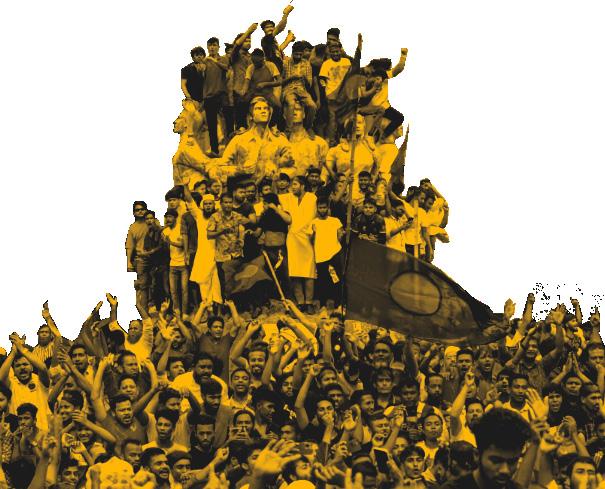

Photo:
Strategic & Political Support
Campaign Strategy Support Risk Analysis
Leadership Development Support Policy Engagement
Narrative Strategy
Operational & Logistical Support
Mediation
Strategic Planning
Capacity Strengthening & Sustainability
Youth Leadership Support Storytelling for Change
Strategic Advocacy Training
NonViolent Action Training
Movement Building
Solidarity & Regional Collaboration
Collective Action Support

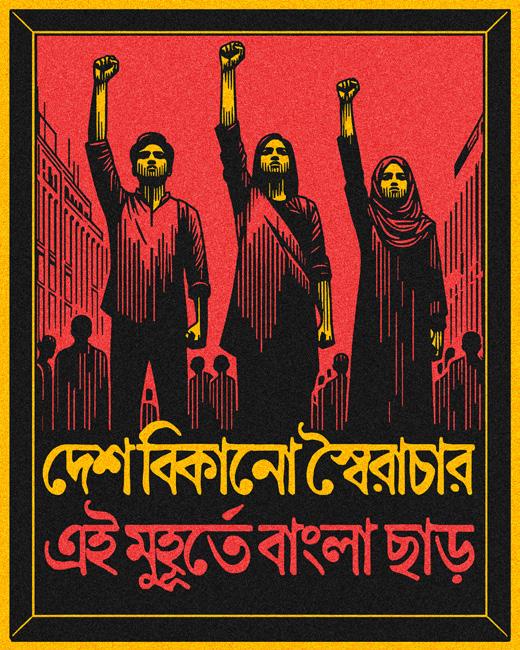

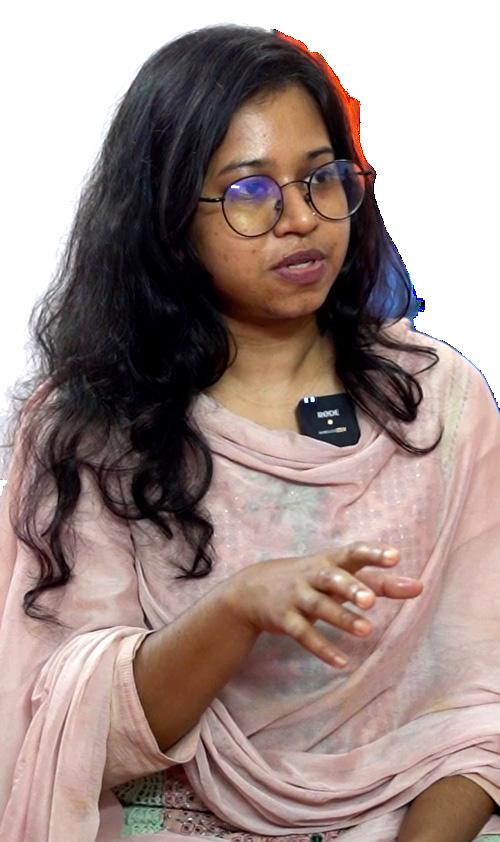
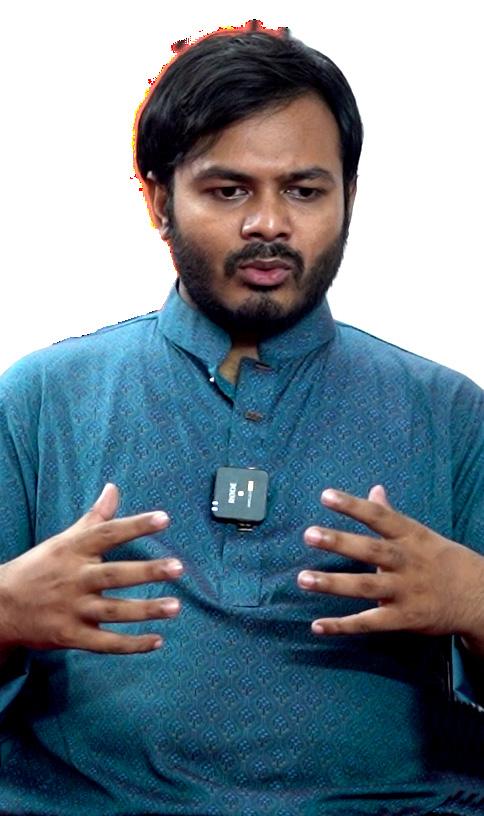
Illustration: Debashish Chakrabarty
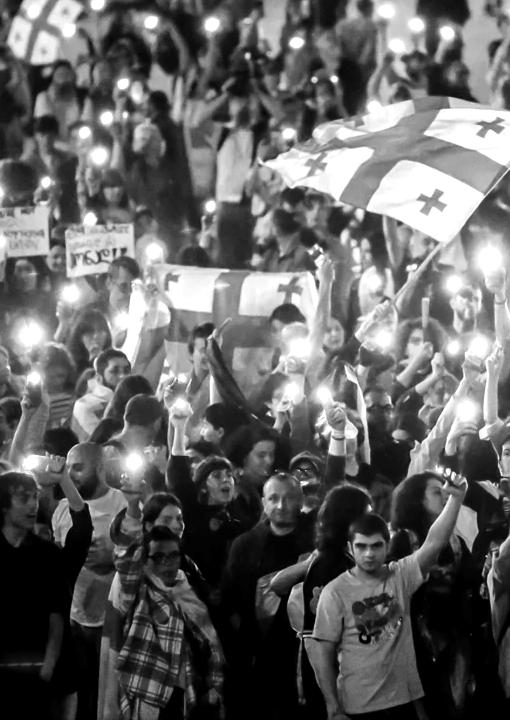
GEORGIA 2024: YOUTH RISE FOR EU AND RIGHTS
Photo:
GEORGIA
GEORGIAN YOUTH LEAD POWERFUL PROTESTS, CHAMPIONING EU INTEGRATION AND THE PROTECTION OF HUMAN RIGHTS.
CONTEXT
Situated at the crossroads of Europe and Asia, Georgia has since independence taken steps towards European integration despite grappling with Russian occupation and government corruption.Rising dissatisfaction with the ruling Georgian Dream party in early 2024 was fueled by allegations of democratic backsliding and legislative proposals that threatened media freedom and civil liberties.
Protests gained momentum in the lead-up to the summer as controversial legislative reforms ignited widespread outrage. Later in the year, contested national elections marred by accusations of fraud and political suppression brought citizens back to the streets. Georgian youth, already emboldened by earlier activism, emerged as a driving force behind the movement, calling for government accountability, fair governance, and a definitive pro-European trajectory.
NATURE AND GOALS OF THE PROTESTS
The 2024 protests aimed to address Georgia’s systemic governance challenges and assert democratic principles. Key objectives included:
■ Rejection of Restrictive Laws: Protesters opposed legislation curbing media freedom and civil liberties.
■ Transparent Elections: They demanded an investigation into alleged electoral fraud and annulment of disputed election results.
■ Commitment to European Integration: Protesters called for a decisive pro-European stance from the government.
Demonstrations were centered on Tbilisi’s iconic Rustaveli Avenue and featured creative expressions of dissent, including art installations and musical performances. Activists organized legal aid for detainees, provided medical support for the injured, and sustained morale through grassroots solidarity networks. Social media played a pivotal role in mobilizing protesters and garnering international solidarity.
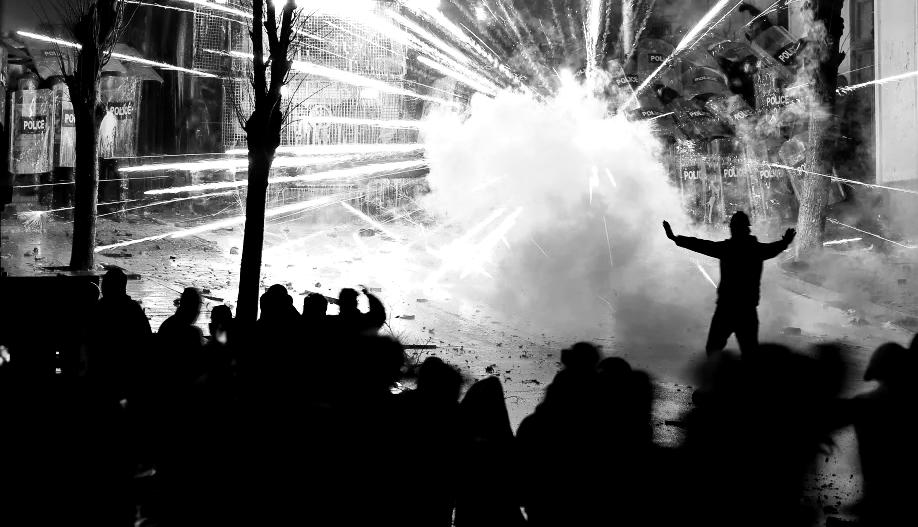
CRACKDOWN
The protests came at a considerable cost:
■ Police Violence: Security forces used tear gas, rubber bullets, and water cannons to disperse crowds, causing numerous injuries and hospitalizations.
■ Arrests and Harassment: Over 200 protesters, including youth leaders, were detained amid reports of mistreatment and intimidation.
■ Disinformation Campaigns: Pro-government media launched propaganda efforts to discredit the movement, branding protesters as foreign agents.
OUTCOMES OF THE PROTESTS
The ruling Georgian Dream party retained power, and systemic challenges remain unresolved. For many activists, the gains are insufficient to address Georgia’s broader democratic deficits.
The protests achieved significant, albeit mixed, results:
■ Election Oversight: International observers, including the EU and OSCE, issued statements urging investigations into electoral irregularities,
though no substantial action followed.
■ Youth Empowerment: The movement galvanized a new generation of youth activists and leaders dedicated to political reform and democratic principles.
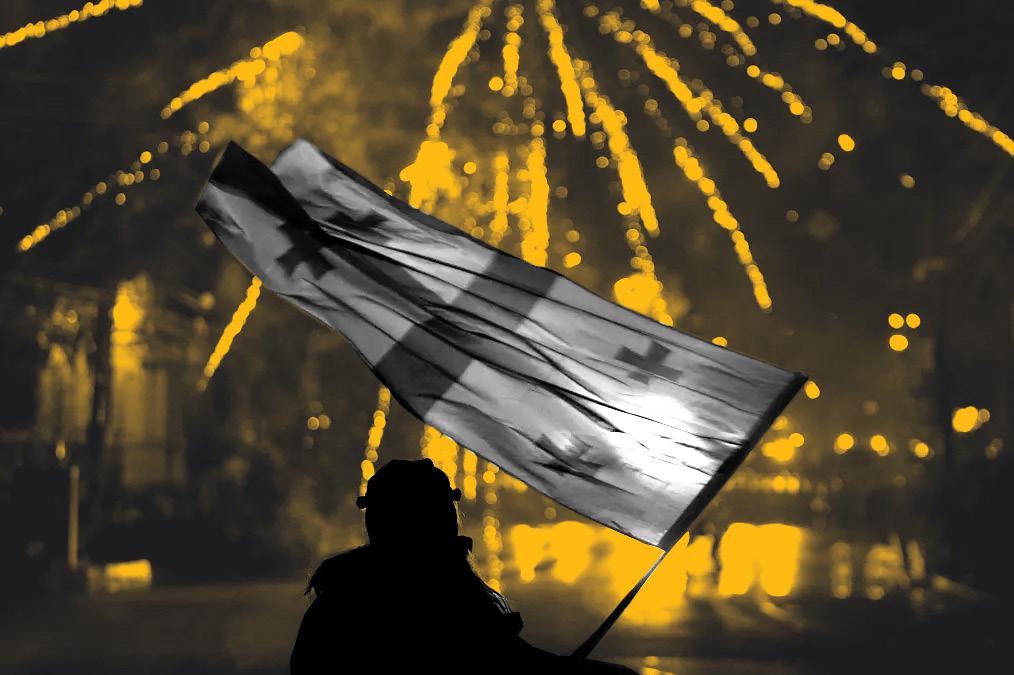
Photo: AP/Pavel Bednyakov
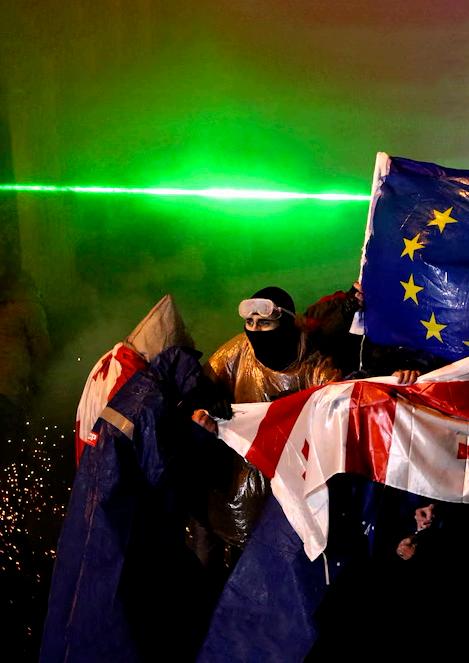
Photo:
ABOUT THE GLOBAL SOCIAL MOVEMENT CENTRE (MOVE)
For decades, the ActionAid federation has been collaborating with movements directly involved in social change struggles, based on a shared vision of secularism, democracy, feminism, and economic and social justice. The Global Social Movement Center (MOVE) was set up in 2022 to deepen and expand this work. Today, MOVE consists of 5 regional hubs located in West Africa, East Africa, Asia Pacific, Europe, and Latin America.
MOVE provides an ecosystem for Human Rights Defenders and their movements to be supported in all aspects of their work through the different phases of their struggles. Currently, it entails an integrated set of capacity strengthening activities for activists in social movements, core movement support functions to social movements, including funding and action research on relevant movements trends. MOVE also focuses on building an ecosystem of actors that can and should support movements, including international convenings, and developing resources for civil society organizations, decision makers and donor community to be better and more relevant allies.
MOVE is a collaboration between ActionAid Nigeria, MS TCDC, Tanzania, ActionAid Denmark and ActionAid Association, India.
WHAT DO DO?
Connecting people, movements and causes through physical events such as the bi-annual Global People Power Forum, global convenings and safe online spaces to share skills, strategies, and experiences on how to make change most effectively.
Flexible and strategic funding for 1) small scale actions when opportunities arise or when context demands it (Rapid Response fund for activists in danger) and 2) for building internal structures, recruitment and retention plans, and finetune the long-term strategies of the movement.
Action-research with practitioners and movement minded scholars and institutions, for example on how to measure and resist nuanced ways of repression or how to mobilize and support diaspora communities.
Curating and sharing lessons and insights and engaging people through stories that inspire via blogs, webinars, and short publications.
Organising and leadership development through capacity programs and mentorship on how to build sustainable movements and employ campaign tactics
including crafting messaging strategies, planning protests, and engaging power holders in dialogue.
Advocacy and solidarity actions to support social movements by adding more attention, legitimacy, and international pressure for their cause and to condemn crackdowns they may face.
HOW WE DO IT?
CONVENINGS & KNOWLEDGE
ACTIVIST WRITER BLOG SERIES: ‘Flash research’ by activists from across the world exploring questions, ideas and learnings central to movements beyond particular contexts. In collaboration with International Center on Nonviolent Conflict.
TROUBLEMAKERS PODCAST: Listen to Troublemakers from around the globe as they showcase stories of creative resistance and examine the tactics, principles, and theories that fuel nonviolent activism.
GLOBAL WEBINARS: Check out upcoming online events bringing people together for critical conversations and collaborative thinking on thematic issues and current events.
MOVE PUBLICATIONS: Collection of guides, tools, thinking and other written endeavors with movements and partners.
TRAINING & MENTORING
Our Global Organising and Leadership Development (GOLD) programme offers a multi-stage learning process designed to fit your busy schedule. Everyone is welcome to take the online courses at any time - at no cost!
These mini courses explore the foundations of organising, distributed leadership, social movements, forms of power and the concept of the Movement Cycle. Upon completing each course, you will be able to download a certificate. Try out GOLD today!
DIRECT SUPPORT
ACTION SUPPORT: For movements that would benefit from doing actions and events to gain experience as a strong foundation to build a sustainable movement.
GET UP, RISE UP DIRECT ACTION FUND: A fund with Beautiful Trouble to support activists globally to shift power through nonviolent direct actions.
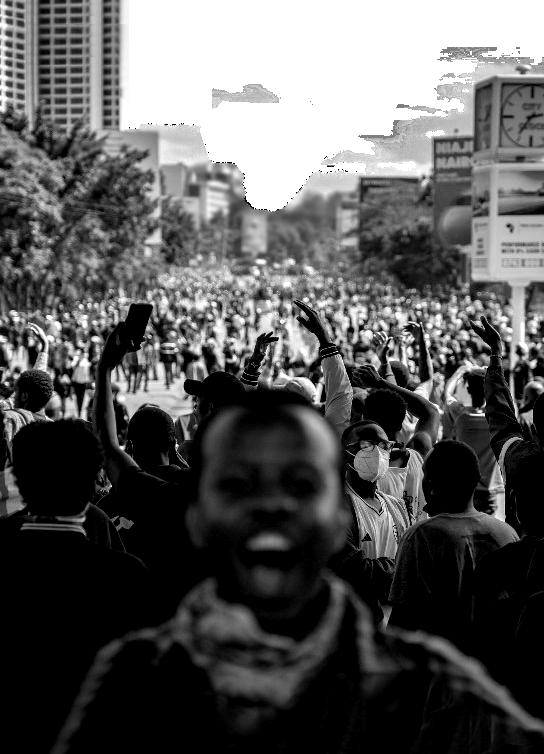
SOCIAL MOVEMENTS ARE THE MOST POWERFUL CATALYST FOR THE FUTURE WE DESERVE.


